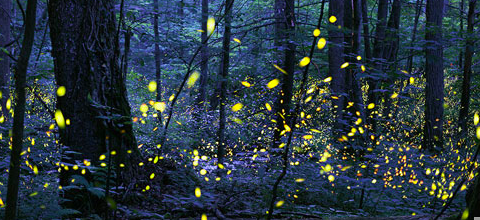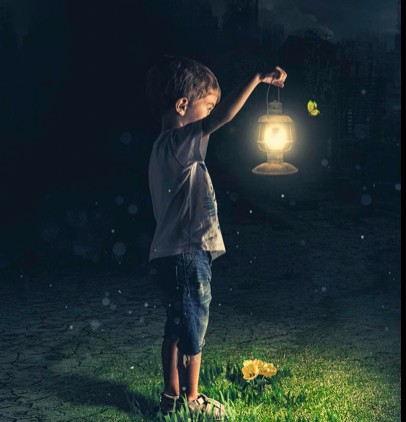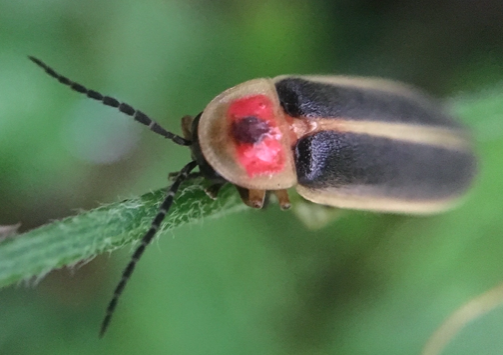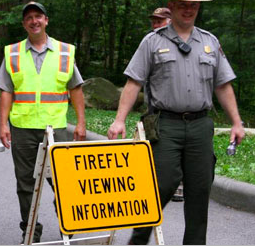Summer evenings in times long past were pretty simple at our house. After a dinner of mostly home grown vegetables (green beans, yellow squash, okra and tomatoes) we’d play a game of hopscotch until it got dark enough to catch fireflies. Hot and sweaty and armed with a mason jar with holes punched in the top, my siblings and I would head to the back yard to catch some magic.

Squealing every time we caught one, we’d compare our harvest, then let them all go, only to be caught again the next night.

My attraction to fireflies is partly nostalgia but partly just because their magic continues to fascinate me even after all these years. At an early age I was taught the science, that they are not really flies but beetles, that the “fire” is actually a bioluminescence that is used primarily to attract mates and that each species has a unique flashing pattern so that if you watch carefully enough you can distinguish one species from another.

But what I’ve only learned recently is that the flashing lights are also used to attract prey. For example, the Pennsylvania firefly uses bioluminescence to attract the Big Dipper firefly, which they then eat. There are over 2000 species of fireflies worldwide, with 170 species living in the U.S. and 50 living in Georgia. Bioluminescence is actually incredibly efficient, using almost no energy to produce light. In comparison, an incandescent lightbulb is only 10 percent efficient, losing 90% of the energy to heat.
In the Smoky Mountain National Park, fireflies have become a tourist attraction. Each summer thousands of visitors flock to the park to see the Carolina firefly which displays synchronous blinking, meaning all the male fireflies blink together. Rangers at the Park explain that for three seconds, the males will blink and then all of a sudden they stop for six seconds. Then they “turn on” again and the pattern repeats over and over for a couple of hours.

Like many species, firefly populations are suffering these days. The reasons are familiar: increased us of pesticides, habitat loss, water pollution and climate change. In addition, fireflies are suffering because of light pollution. Knowing the reasons for their decline aids us in knowing how to correct the problem. We can turn off outside lights at night, avoid lawn chemicals and pesticides, plant native trees and grasses and allow part of our landscapes to just be natural with fallen logs and tall grasses to provide habitats for the fireflies.
But science and the reality of declining populations cannot take away from the pure magic of the firefly. Fortunately, summer evenings in our backyard are still illuminated by these wonderful creatures. Now all I need is a good, flat rock for hopscotch.
